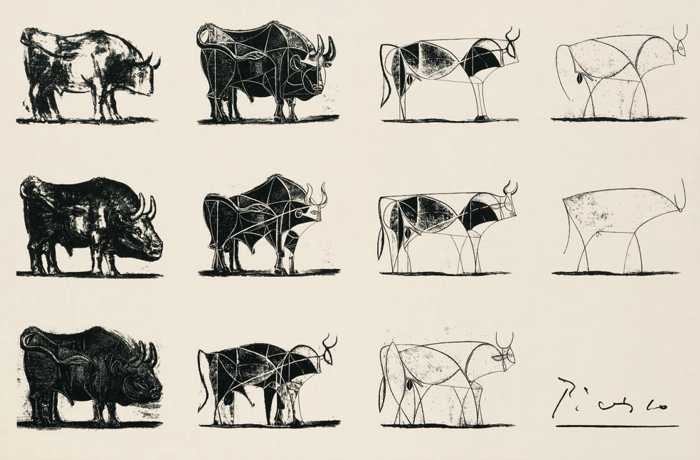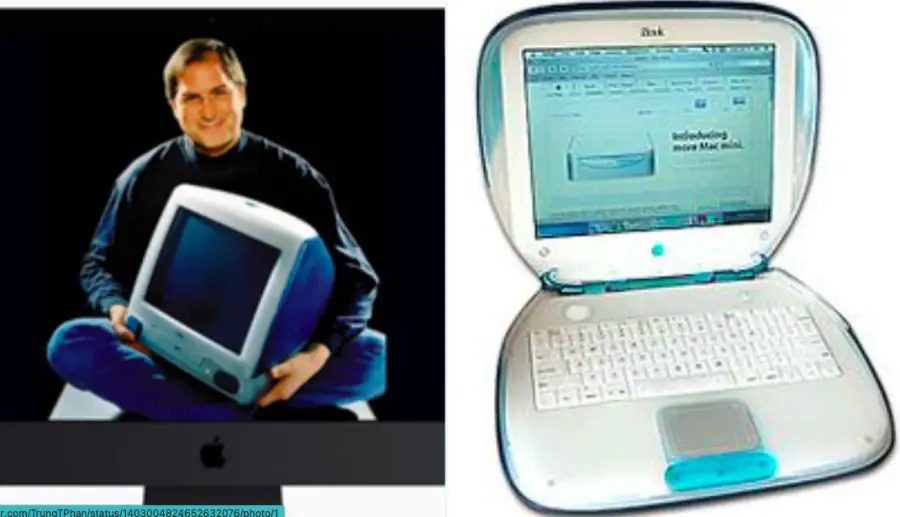Before innovation is born, “no” is said 1,000 times before you say, “yes.”
Steve Jobs sought innovation using simplicity drawing inspiration from art.
Here’s how The Bull by Pablo Picasso inspired Apple to create the devices that reshaped our society.

In the 45′ winter of France, Pablo Picasso created 11 stone prints of “The Bull”.
With each iteration, Pablo removes unnecessary elements to find the true essence of any object.

In the image above, the bull progresses from the best “real-life” version to a few lines in the 11th version.
With each version, an artistic abstraction method is applied by Pablo Picasso.
11 times in a row until the simplified essence of the bull is found.
Like a gold panner sifting through the muck to find nuggets of gold, an artist removes distractions in their abstractions.
“Two holes. That’s the symbol for the face, enough to evoke it without representing it. But isn’t it strange that it can be done through such simple means? Whatever is most abstract may perhaps be the summit of reality.”
Pablo Picasso on the abstraction method
Steve Jobs Creates a Training Curriculum for Apple
In 2008, Steve Jobs created an internal training curriculum for Apple. The program was meant to teach new employees Apple’s design philosophy.
Picasso’s Bull is an example of Apple’s core design philosophy.
For new employees, Apple also taught the lesson by comparing its Apple TV remote with competitors’ mouses. At significantly fewer buttons, Steve Jobs’s impact on design philosophy is simple:
Simplify by removing what’s unnecessary. That’s the way to success.

Apple Was Near Bankruptcy in 1997
However, Apple had been on the verge of financial ruin. The rather complicated personal digital assistant (Newton) led the company in a series of failed products.

Referring to Pablo Picasso in saying “no”, Steve Jobs promptly shut these products down.

“Wait…stop. THIS IS CRAZY.”
Steve Jobs on Apple Products in 1997
During a meeting on all Apple’s products, Jobs shouted and marched to the whiteboard.
It was a 2×2 table with his new product line:

By saying “NO”, Steve Jobs knew what the public wanted: something simple.
A market cap lower than $5 billion upon Jobs’ return…

reached about $350 billion by the time of his death in 2011.
The evolution of the iPod, iPad, and iPhone followed in the steps of Pablo Picasso.
From the clunky wheel of the iPod classic to the single touchscreen of today’s iPad, Steve Jobs applied Pablo Picasso’s teachings to streamline Apple.

Think Different.
“You have to deeply understand the essence of a product in order to be able to get rid of the parts that are not essential.”
Steve Jobs
Sounds like Picasso.
With once rare footage of Pablo Picasso sketching “The Bull,” Apple launched its wildly successful “Think Different” campaign.
Check it out below.

